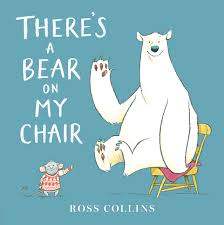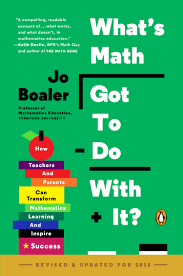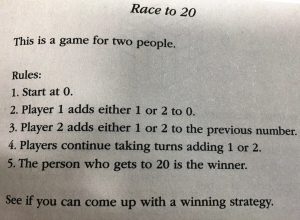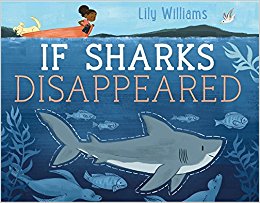I recently had the privilege of attending a Colloquium on Early Mathematics Learning with Dr. Megan Franke from UCLA Graduate School of Education and Information Studies. The workshop was put on by Grand View University’s Jacobson Institute for Innovation in Education. Dr. Franke is the 2018 Jacobson Visiting Scholar.
During the workshop, Franke demonstrated some ways to infuse any story time with mathematics, beginning with a Describe, Draw, Describe.
Describe, Draw, Describe
 Geometry is all about relationships and movement in space. Picture books offer opportunities to have conversations with young learners about spatial relations.
Geometry is all about relationships and movement in space. Picture books offer opportunities to have conversations with young learners about spatial relations.
According to Stanford University’s DREME TE website, which is a math resource for early childhood educators:
Spatial language provides children with essential tools to describe their environments and negotiate their wants and needs (“No, I don’t want that one, I want the one under it!”). And, it turns out, adults’ and young children’s use of spatial language predicts children’s skills at spatial problem solving later on. Spatial language includes words describing location/position (under, in front of), attributes (long, high, side, angle, same, symmetrical), orientation and mental transformation(left, turn, match), and geometric shape names (rectangular prism, triangle, sphere). [Photo from DREME TE blog]
Dr. Franke demonstrated an activity she called Describe, Draw, Describe. It’s a technique that anyone can couple with story time to help kids practice their spatial and communication skills. Note that the activity is not about copying the original image, it’s about practicing spatial relations.
Franke used the book There’s a Bear on My Chair by Ross Collins as her example.
Here’s how Describe, Draw, Describe works:
- After reading a picture book, pick one place in story to go back to.
- DESCRIBE: Return to that page or picture and ask “What do you notice?”
- DRAW: Ask students to “Draw what you see.”
- DESCRIBE: When they are done drawing, invite them to “Talk about what you drew.”
Tips for Educators and Parents:
When reading as story as a catalyst for a mathematics conversation, Dr. Franke suggests:
- During the story, pick one place to pause and ask a math question, which could be based on numbers, spatial relationships, shapes, etc. Be mindful of interrupting too much and think carefully about your questioning.
- Don’t intervene too much! Make it your practice to put the story first, keeping it alive by limited interruptions.
- Pick one place to go back after the story is over. (This is where you do Describe, Draw, Describe)
Note: Draw, Describe, Draw can also be done using works of art for an art and mathematics infusion.
 Scaffolding Skills: Early Childhood and Beyond
Scaffolding Skills: Early Childhood and Beyond
Reading picture books is a strategy to help develop mathematical language. It puts the terms into context and provides a visual way to remember them. When students have the language of spacial relationships, they have a scaffold to support geometry skills. This helps them articulate directional relationships, draw models, and understand use of space and time.
Consider this strategy when drawing simple geometric shapes and turning those shapes into 3-D renderings. An example is when a square becomes a cube so that a student can determine volume. They can draw a better model if they understand spatial relationships, and modeling is the key to simple and complex geometric shapes.
To the left are a few more books that lend themselves to spatial skills, but any picture book can be used.
************
Want to Learn More?
For more information about this resource and more can be found at http://prek-math-te.stanford.edu/. The DREME TE resources are intended for teacher educators, and are available free with a log in.
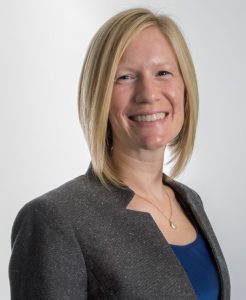 Post by Dr. Sarah Derry, SC STEM Hub Manager and parent to three energetic boys.
Post by Dr. Sarah Derry, SC STEM Hub Manager and parent to three energetic boys.
This blog is dedicated to connecting STEM and literacy. If you have ideas for this blog OR would like to be a guest blogger, please email the Hub.

